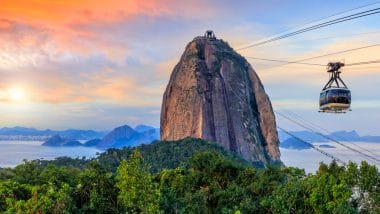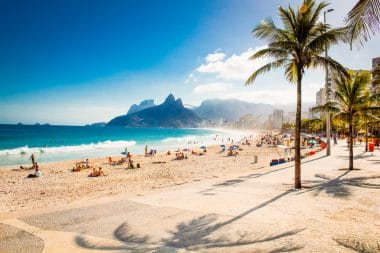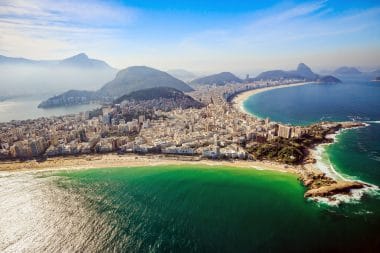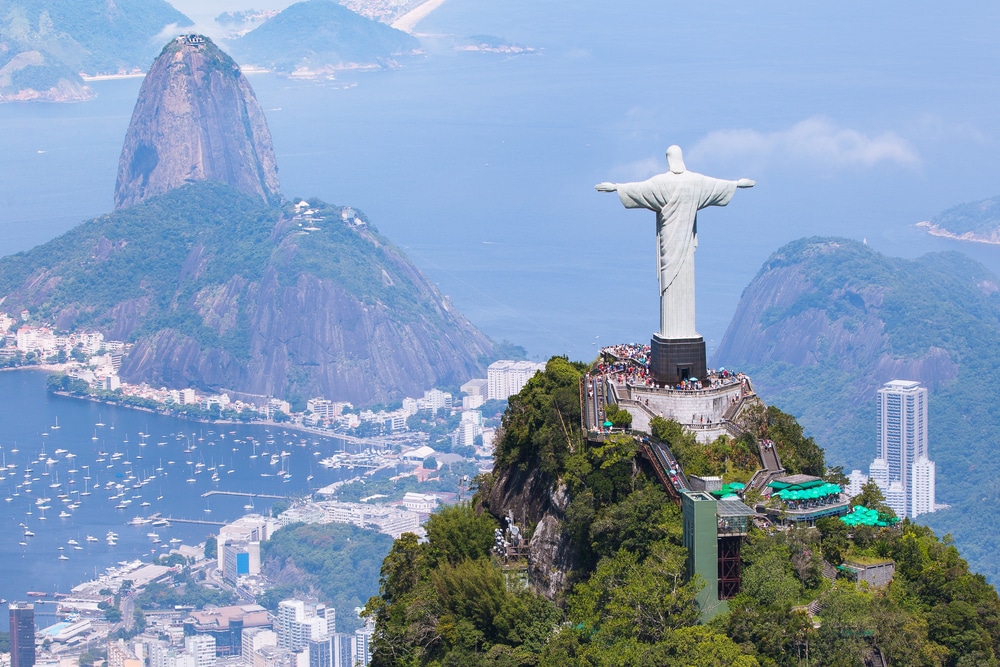Rio de Janeiro, the former capital of Brazil, is probably synonymous with the ultimate holiday paradise like hardly any other city in the world. Dreamlike sandy beaches of world fame, ice-cold coconut water under palm trees and South American joie de vivre are just some of the associations that the sonorous name of the metropolis evokes.
Sights such as Copacabana Beach, Sugarloaf Mountain or the Christ the Redeemer statue also need no further introduction. In addition, the Cidade Maravilhosa, the beautiful city, has numerous other natural and cultural treasures to offer.
Rio for nature lovers

Although Rio de Janeiro is a truly gigantic metropolis with almost seven million inhabitants, you don’t have to travel long distances from almost any place in the city to enjoy the peace and quiet and far away from the hustle and bustle of the big city in the midst of tropical flora.
After all, it is not for nothing that Rio can boast a huge rainforest in the middle of the city area. In addition, the cityscape is characterized by several characteristic hills that invite you to hike, where experienced hikers as well as newcomers get their money’s worth thanks to their diversity.
In general, nature and the outdoors make up a large part of the everyday life of a Carioca (the nickname of the inhabitants). The Lagoa (lagoon) in the South Zone is also the ideal starting point for outdoor activities. It can be easily circumnavigated as part of a bike tour, while the park-lined shore with an impressive backdrop is ideal for a picnic in between and also always offers a view of the Christ the Redeemer statue.
Beaches in Rio de Janeiro

Although Copacabana Beach has a good reputation, Rio’s beach does not end there. Nearby, in the noble district of Leblon, it is not uncommon to meet local celebrities such as telenovela actors, models or footballers sunbathing on the beach. The beach of São Conrado, located a little further east, is also considered a meeting place for privileged classes in front of a breathtaking backdrop.
Apart from these city beaches, you can explore more natural beaches in the west in Barra and Recreio , which are less frequented, especially during the week.
For this purpose, however, it is advisable to rent a car, because they cannot be reached by bus or even the subway.
Tip: If they want to mingle with the locals, they are not allowed to take a towel to the beach under any circumstances or even worse, dry themselves with it. Cariocas lie down on a beach towel and then slowly let the sun dry them.
If you are looking for a completely different beach experience, Paquetá is the right place for you. The small island in Guanabara Bay in the northeast of the city is not used by cars and can be reached by a ferry that departs every two hours from the city center.
Cultural activities in Rio de Janeiro

Even though Rio is only the second largest city in Brazil after São Paulo, the plate of cultural offerings is more than amply covered (in almost every respect) thanks to its history as the former capital and long-time navel of the country.
Whether it’s top-notch museums (Museu de Arte do Rio, Art Museum, or Museu Histórico Nacional, Historical Museum) or cultural centers (CCBB), Rio de Janeiro has it covered. The Real Gabinete Português de Leitura library in the city centre houses the largest collection of Portuguese literature in the world and is also visually striking. In addition, the city was the first ever to be named the world capital of architecture this year.
The Madureira district is the cradle of samba and therefore a true mecca for music lovers. It is also home to the Portela samba school, which is one of the most traditional and successful in the city.
Almost everyone should be familiar with the Rio Carnival. What only a few people know, however, is that even if the main events around the carnival take place within a week, with a little luck you can experience some of the so-called blocos, i.e. the parades, as early as November.
Food and Drink

Brazilians are particularly proud of their national cuisine. The national dish, the feijoada, a stew of beans and pork or beef, is available almost everywhere, but it is particularly recommended and authentic in the Bar do David in the Leme district.
Probably no one who visits Rio de Janeiro misses a flying visit to the Sugarloaf Mountain. However, the surrounding district of Urca itself is also worth seeing with its quiet beach and picturesque wall. It is also considered the safest area in Rio. If you take the gondola down from the Sugarloaf Mountain or even walk this distance, you should reward yourself with a beer from the Bar Urca afterwards. Here you can also find delicious pastel (similar to a spring roll) or bolinho de bacalhau (cod croquette).
More upscale cuisine can be found in posh Xian in a shopping center next to the national airport. In addition to the excellent Japanese food, the restaurant also scores with an incomparable view over Guanabara Bay and the south of the city.
The perfect end to take a last look at the Cidade Maravilhosa as the darkness of night settles over the city under the protective hand of Christ.
Facts about Rio de Janeiro
- Rio de Janeiro was the capital of Brazil until 1960, when it was replaced by Brasília.
- The inhabitants of Rio de Janeiro are referred to as “Cariocas”.
- The famous Rio de Janeiro Carnival is one of the largest and most famous carnivals in the world, attracting millions of tourists every year.
- Rio de Janeiro has one of the most famous sights in the world – the Christ the Redeemer statue on Mount Corcovado.
- Rio de Janeiro is also known for its beaches, including the famous Copacabana and Ipanema beaches.
- The city has many favelas (slums), which are often located on the hills surrounding the city.
- Rio de Janeiro hosted the 2016 Olympics.
- The city also has a significant film industry and has appeared in films such as “City of God” and “Rio”.
- The economy of Rio de Janeiro is based on various industries such as finance, trade, tourism, oil and gas.
- The climate in Rio de Janeiro is tropical, with warm temperatures and high humidity.
Museums in Rio de Janeiro
- Museum of the Future: This futuristic museum explores the impact of science and technology on our planet, offering interactive exhibits on topics such as climate change, sustainability, and the future of humanity.
- National Museum of Brazil: Unfortunately, this museum was severely damaged by a fire in 2018, but efforts are being made to restore it. Before the fire, it was the largest museum of natural history and anthropology in Latin America, with collections that included ancient artifacts, fossils, and indigenous art.
- Museum of Modern Art: This museum presents contemporary art from Brazil and around the world, with a focus on modern and contemporary Brazilian art.
- Museum of the Republic: Located in the former presidential palace, the museum features exhibitions on Brazilian history, culture, and politics, as well as the chance to explore the palace’s magnificent interiors.
- MAR – Museum of Art of Rio: This museum is dedicated to the art and culture of Rio de Janeiro with exhibitions that explore the city’s history, music, dance, and visual arts.
- Carmen Miranda Museum: This museum celebrates the life and legacy of Brazilian singer and actress Carmen Miranda, who became a Hollywood icon in the 1940s.




